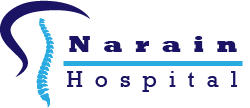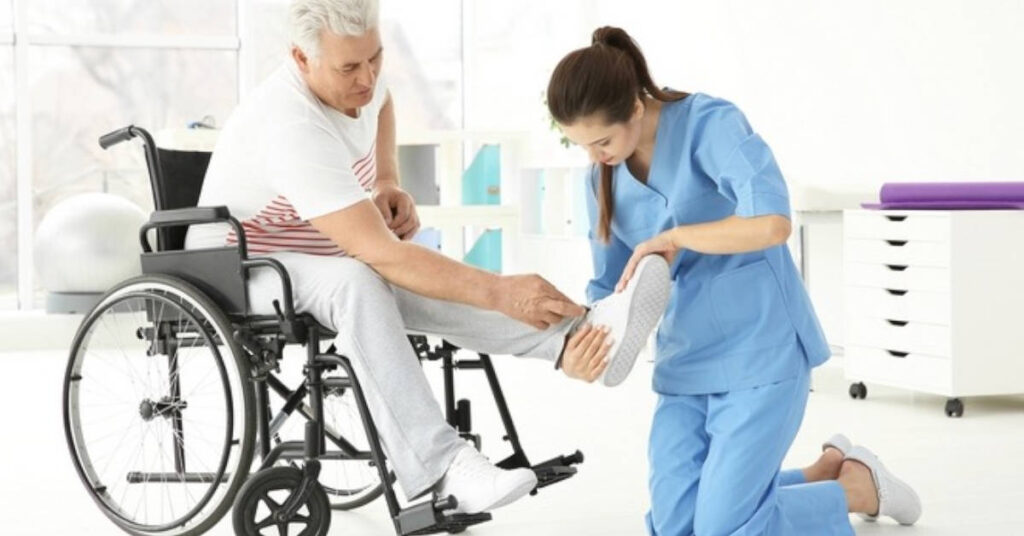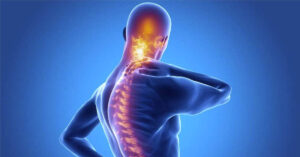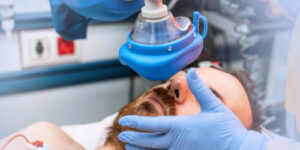What is a stroke?
Stroke is a block in a blood vessel or a rupture of a blood vessel inside the brain, which is sometimes called as brain attack. When a stroke occurs, brain cells in the immediate area begin to die because they stop getting oxygen and the nutrients they need to function.
A stroke is a medical emergency, and prompt treatment is crucial. Early action can reduce brain damage and other complications.
What are the types of stroke?
There are mainly two types of stroke:
Ischemic Stroke – blockage of blood vessel
Haemorrhagic Stroke – rupture of the blood vessel
What happens in an acute ischaemic stroke?
In an acute ischaemic stroke, the blood flow to a part of the brain is interrupted because of sudden blockage of a blood vessel. The blockage is usually due to a blood clot and starves the brain of needed oxygen and nutrients. The centre of the starved area may die quickly, however the surrounding area may die slowly over hours, thus allowing hope of recovery.
Hemorrhagic stroke occurs when a blood vessel in the brain leaks or ruptures. Brain hemorrhages can result from many conditions that affect the blood vessels. Factors related to hemorrhagic stroke include:
* Uncontrolled high blood pressure
* Overtreatment with blood thinners (anticoagulants)
* Bulges at weak spots in your blood vessel walls (aneurysms)
* Trauma (such as a car accident)
* Protein deposits in blood vessel walls that lead to weakness in the vessel wall (cerebral amyloid angiopathy)
* Ischemic stroke leading to hemorrhage
A transient ischemic attack (TIA) — sometimes known as a ministroke — is a temporary period of symptoms similar to those in a stroke. A TIA doesn’t cause permanent damage. A TIA is caused by a temporary decrease in blood supply to part of the brain, which may last as little as five minutes.
Like an ischemic stroke, a TIA occurs when a clot or debris reduces or blocks blood flow to part of the nervous system.
Seek emergency care even if you think you’ve had a TIA because your symptoms got better. It’s not possible to tell if you’re having a stroke or TIA based only on the symptoms. If you’ve had a TIA, it means you may have a partially blocked or narrowed artery leading to the brain. Having a TIA increases your risk of having a full-blown stroke later.
Anyone can suffer from stroke.
Although many risk factors for stroke are out of our control, several can be kept in line through proper nutrition and medical care
Risk factors for stroke include the following:
Above 60 years of age
Male
A family history of stroke
High blood pressure
High cholesterol
Smoking cigarettes
Diabetes
Obesity and overweight
Cardiovascular disease
A previous stroke or Transient Ischemic Attack (TIA)
Use of narcotic drugs
Heavy use of alcohol
Diagnosis
How would we know, what has happened to the patient?
CT Scan/MRI reveals the reason and your doctor will tell you exactly what has happened.
Treatment
Can stroke be treated? And what is TPA?
For the most effective treatment of stroke, a person with a suspected stroke must be given immediate medical attention. It is during the critical first 4 1/2 hours following the stroke that stroke therapy has the highest curative potential.
Doctors can now administer an injection of tissue plasminogen activator (t-PA) alteplase the only approved drug in the treatment to dissolve the clots that block blood flow to the brain.
If the blockage can be removed with administration of tPA and sufficient blood flow is restored within 4 1/2 hours following the stroke, severity of permanent brain damage (neurological disability) may be reduced.
Why choose to give stroke treatment with TPA Alteplase?
Benefits (Alteplase):
Alteplase (tPA) may reverse neurologic impairment by dissolving the clot in the brain
More stroke patients treated with alteplase recovered with reduced or no disability at 3 months and 1 year
Numerous studies support the safety of alteplase (tPA)
Over a decade of real-world experience in >400,000 patients
What are the benefits and risks of Alteplase (T-PA) treatment?
BENEFITS (Alteplase):
Atleast 1 out of 2 alteplase (tPA) treated patients would have minimal or no neurological deficit for 3 months from treatment and the benefits were similarly seen after 1 year
Whereas, only 1 out of 4 patients will recover after stroke without alteplase (t-PA)
Fewer patients die due to alteplase therapy v/s given no drug (17% vs 21%)
Risks:
It is important to understand both the benefits and risks of the alteplase (t-PA) treatment and then make a decision. The most common complication during alteplase therapy is bleeding inside the brain
6 out of 100 patients treated with alteplase within 3 hour from symptoms onset may have ICH at 36 hours
But only 1 in 100 patients who experience alteplase related ICH may have a fatal outcome
Is Alteplase (TPA) treatment recommended?
Alteplase (tPA) is part of stroke management guidelines of:
Indian Stroke Association
American Stroke Association
World Stroke Organization
How can Stroke be prevented?
Knowing and controlling blood pressure
Maintaining low cholesterol levels
Healthy diet, no smoking and narcotic drugs and controlled intake of alcohol
Controlling diabetes
Managing weight
Managing stress
Dos & Donts
How to identify a Stroke or Brain attack? Look for these simple signs (Act FAST) to identify stroke early so that appropriate treatment can be started as soon as possible
Face: Ask the person to smile. Does one side of the face droop?
Arms: Ask the person to raise both arms. Does one arm drift downwards?
Speech: Ask the person to repeat a simple sentence. Are the words slurred? Can he/she repeat the sentence correctly?
Time: If a person shows any one or more of these symptoms, time is important. Get to the hospital fast. Brain cells die every minute.
Dos and dont’s when dealing with a Stroke/Brain attack/paralysis
Make the person lie down
Loosen all tight clothing
If he is vomiting, turn him gently onto one side and allow him to vomit fully so that he can breathe well
If he is getting a seizure or fit, gently hold him but do not put any pressure on him
Try to call the doctor/hospital before arrival
Try to contact the patients relative
Do not try to give him some medicine unless advised by the doctor
Do not try to give him something to eat or drink
Do not try to make him stand or walk
Do not panic but rush him/her to a hospital
Knowing your stroke risk factors, following your health care provider’s recommendations and adopting a healthy lifestyle are the best steps you can take to prevent a stroke.
If you’ve had a stroke or a transient ischemic attack (TIA), these measures might help prevent another stroke. The follow-up care you receive in the hospital and afterward also may play a role.
Many stroke prevention strategies are the same as strategies to prevent heart disease. In general, healthy lifestyle recommendations include:
* Controlling high blood pressure (hypertension). This is one of the most important things you can do to reduce your stroke risk. If you’ve had a stroke, lowering your blood pressure can help prevent a subsequent TIA or stroke. Healthy lifestyle changes and medications are often used to treat high blood pressure.
* Lowering the amount of cholesterol and saturated fat in your diet. Eating less cholesterol and fat, especially saturated fat and trans fats, may reduce buildup in the arteries. If you can’t control your cholesterol through dietary changes alone, your doctor may prescribe a cholesterol-lowering medication.
* Quitting tobacco use. Smoking raises the risk of stroke for smokers and nonsmokers exposed to secondhand smoke. Quitting tobacco use reduces the risk of stroke.
* Managing diabetes. Diet, exercise and losing weight can help you keep your blood sugar in a healthy range. If lifestyle factors don’t seem to be enough to control your diabetes, your doctor may prescribe diabetes medication.
* Maintaining a healthy weight. Being overweight contributes to other stroke risk factors, such as high blood pressure, cardiovascular disease and diabetes.
* Eating a diet rich in fruits and vegetables. A diet containing five or more daily servings of fruits or vegetables may reduce the risk of stroke. The Mediterranean diet, which emphasizes olive oil, fruit, nuts, vegetables and whole grains, may be helpful.
* Exercising regularly. Aerobic exercise reduces the risk of stroke in many ways. Exercise can lower blood pressure, increase the levels of good cholesterol, and improve the overall health of the blood vessels and heart. It also helps you lose weight, control diabetes and reduce stress. Gradually work up to at least 30 minutes of moderate physical activity — such as walking, jogging, swimming or bicycling — on most, if not all, days of the week.
* Drinking alcohol in moderation, if at all. Heavy alcohol consumption increases the risk of high blood pressure, ischemic strokes and hemorrhagic strokes. Alcohol may also interact with other drugs you’re taking. However, drinking small to moderate amounts of alcohol, such as one drink a day, may help prevent ischemic stroke and decrease the blood’s clotting tendency. Talk to your doctor about what’s appropriate for you.
* Treating obstructive sleep apnea (OSA). Your doctor may recommend a sleep study if you have symptoms of OSA — a sleep disorder that causes you to stop breathing for short periods repeatedly during sleep. Treatment for OSA includes a device that delivers positive airway pressure through a mask to keep the airway open while you sleep.
* Avoiding illegal drugs. Certain street drugs, such as cocaine and methamphetamine, are established risk factors for a TIA or a stroke.
If you’ve had an ischemic stroke or a TIA, your doctor may recommend medications to help reduce your risk of having another stroke.
These include:
* Anti-platelet drugs. Platelets are cells in the blood that form clots. Anti-platelet drugs make these cells less sticky and less likely to clot. The most commonly used anti-platelet medication is aspirin. Your doctor can help you determine the right dose of aspirin for you.
After a TIA or minor stroke, your doctor may give you aspirin and an anti-platelet drug such as clopidogrel (Plavix) for a period of time to reduce the risk of another stroke. If you can’t take aspirin, your doctor may prescribe clopidogrel alone.
Anticoagulants. These drugs reduce blood clotting. Heparin is fast acting and may be used short-term in the hospital.
* Slower-acting warfarin (Jantoven) may be used over a longer term. Warfarin is a powerful blood-thinning drug, so you’ll need to take it exactly as directed and watch for side effects. You’ll also need to have regular blood tests to monitor warfarin’s effects.
Several newer blood-thinning medications (anticoagulants) are available for preventing strokes in people who have a high risk. These medications include dabigatran (Pradaxa), rivaroxaban (Xarelto), apixaban (Eliquis) and edoxaban (Savaysa). They’re shorter acting than warfarin and usually don’t require regular blood tests or monitoring by your doctor. These drugs are also associated with a lower risk of bleeding complications compared to warfarin.



